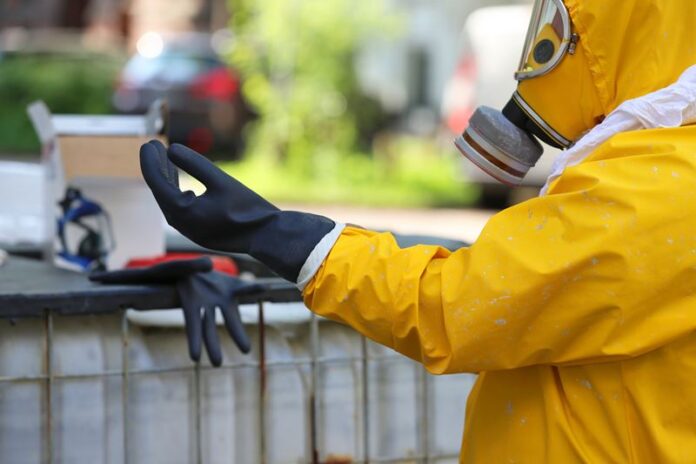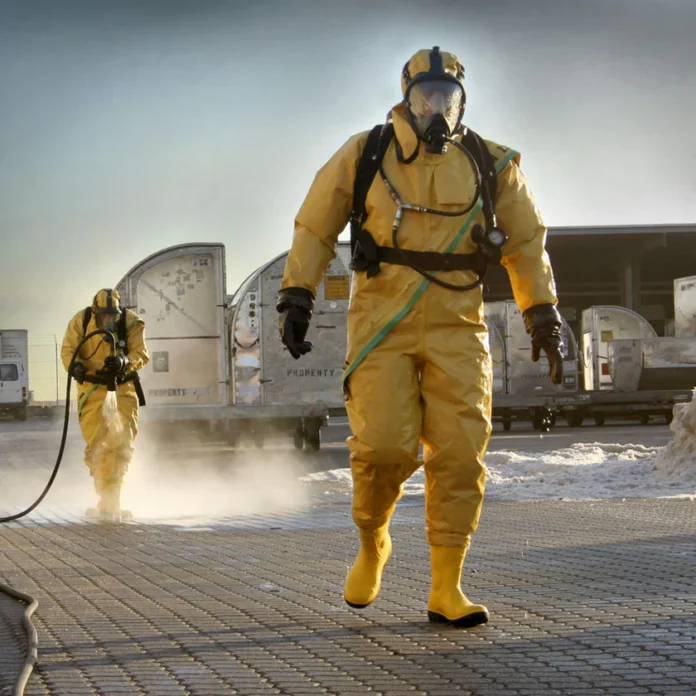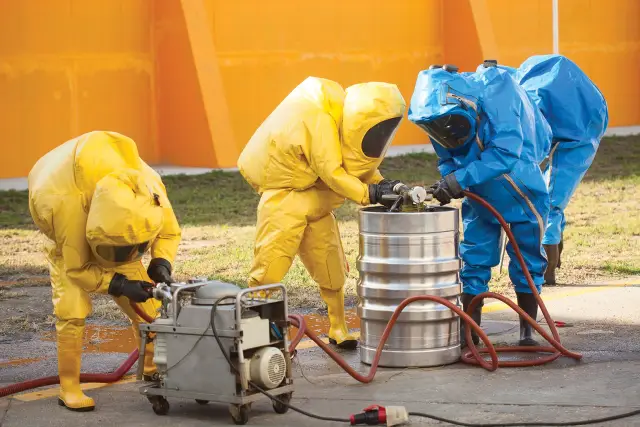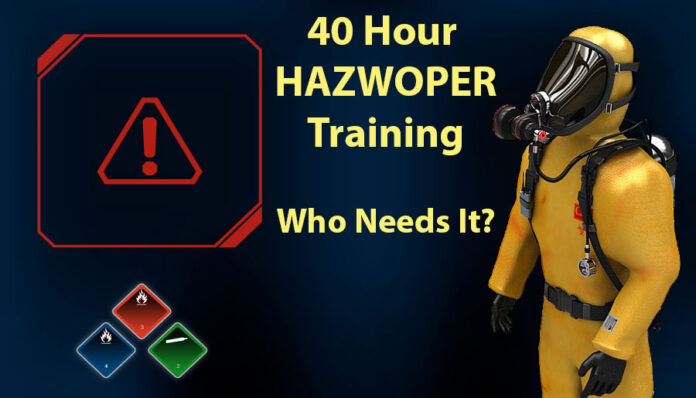High-hazard workplaces are sites that present an imminent danger to workers. Because of this, these locations must meet OSHA’s requirements for Hazardous Work Site Operations (HAZWOPER) Standards. Respectively, HAZWOPER training is mandatory for employees working in high-hazard work environments. This is because HAZWOPER 40-hour course teaches workers about the unique hazards they may encounter and provides them with the necessary precautions and procedures to avoid accidents and injuries.
What is HAZWOPER Training?

HAZWOPER is an acronym that stands for Hazardous Waste Operations and Emergency Response. This type of training prepares workers for handling and cleaning up hazardous substances and materials. It’s an important course because it teaches workers how to protect their health, safety and the environment from dangerous toxins found on work sites. The training consists of a two-day class covering the following topics: First Aid and CPR, Biological hazards, Chemical hazards, PPE and fit testing procedures, GHS and its application, General safety and health hazards, Handling emergencies, and Handling spills.
Why is HAZWOPER training required?
Clean-up efforts of toxic substances such as fuel, pesticides, chemicals, and radioactive waste are extremely dangerous and must be performed by trained personnel. Without proper training, workers are likely to make mistakes that can cause serious health issues. HAZWOPER training can help workers avoid mistakes and save lives by providing them with information on the proper tools and techniques to use when dealing with chemicals and other toxins that pose a threat to their health and the environment.
What Are The Core Components of a Good HAZWOPER Course?
It is important to understand the content of a 40-Hour HAZWOPER course before you make your selection. There are two major components of an approved course: safety and health training and hazardous waste operations. Safety and health training covers the basics of hazard communication, personal protective equipment, confined spaces, fire safety, emergency response planning, confined space entry permits, and air monitoring. Hazardous waste operations must include instruction in sampling and analysis methods, controllers and containment system design criteria, waste site characterization methods, containment technologies, and procedures for safely handling hazardous materials. The student should understand specific legal requirements regarding providing medical surveillance for personnel involved in hazardous waste operations in addition to discussing risks associated with exposure to hazardous material during work activities.
The curriculum should address safe work practices for controlling risk exposures during emergency response operations including emergency procedures such as evacuation plans, shutdown or isolation procedures, team assignments, and roles of personnel onsite.
The student should gain an understanding of how to prepare a site-specific safety plan to minimize potential risk exposure as well as become more familiar with applicable signs/labels used during onsite operations.
This type, of course, should also teach students how to properly handle contaminated items using personal protective clothing/equipment and decontamination procedures used by hazmat teams in dealing with spills or other incidents involving hazardous materials.
Evaluating Course Instructors

Choosing the right HAZWOPER 40-hour course for your needs can be a difficult decision. When evaluating potential courses, it is important to consider the qualifications and expertise of the instructors. Course instructors should have significant experience in the Hazardous Waste Operations and Emergency Response (HAZWOPER) field, as well as an industry-recognized certification in safety training.
Additionally, you should look for instructors who are well-versed in the most up-to-date hazardous waste regulation and compliance guidelines. An experienced instructor should also be knowledgeable about various health and safety practices, including personal protective equipment (PPE) and respiratory protection requirements, decontamination methods, spill control procedures, possible chemical exposure risks, and other hazardous material handling protocols.
Ultimately, you should select a 40-Hour HAZWOPER course that meets all the latest regulatory requirements while also providing ongoing support to participants during their studies. Instructors who can ensure student success by providing practical tips on how to minimize risk while safeguarding people and property are key when making an informed decision on your choice of course.
Recommended Hazwoper 40-hour Courses

– Safety Training Solutions – This course has a pass rate of over 90% and a variety of online and self-guided options. It also has a wide variety of positive reviews, is affordable, and is approved by NAOSHWA. – Industrial Safety Solutions – This course is well-structured, provides enough hands-on activities, is up-to-date with the latest information, and has a variety of positive reviews. – Trainco Hazwoper Training – This course has a variety of positive reviews, is available in a variety of formats, and has a pass rate of over 90%. – National Safety Council Hazwoper and Wildfire Training – This course has a variety of positive reviews, is affordable, and has a wide variety of positive reviews. – HazComtics – This course has a variety of positive reviews, is affordable, and is available in a variety of formats. – IHSA-Approved Hazwoper Training – This course has a variety of positive reviews, is affordable, and is approved by NAOSHWA. – Hazcomics – This course is well-structured and has a variety of positive reviews. – Trainco Hazwoper Training – This course is up-to-date with the latest information, has a variety of positive reviews, and has a pass rate of over 90%.
Conclusion

Choosing the right HAZWOPER 40-hour course can be challenging. To make the process easier, you should look for training providers with excellent reputations, a wide variety of dates and times, flexible payment plans, and online and self-guided formats. A good course will provide you with the information you need to protect yourself and the environment from dangerous toxins, as well as the techniques and tools required to handle spills and other emergencies.
It is important to take into consideration factors such as your experience level, location, cost, the scope of work, and course duration. Additionally, be sure to check that the certification is nationally recognized, aligned with your organization’s safety standards and that the instructions are easy to understand. Finally, follow up with a second opinion from a professional or certified expert to confirm you have chosen correctly.
Once you complete your HAZWOPER 40-Hour Course successfully, it is time to put your knowledge and skills into action by practicing safe workplace practices and procedures. Taking ongoing training in hazmat operations can help keep you up-to-date on industry advances and help you stay ahead of hazards that may arise in hazardous waste management processes.









